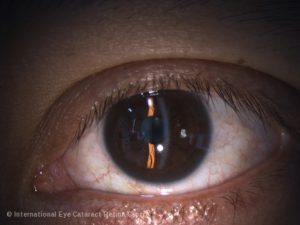
Dr Joy Chan
MBBS(Singapore)(Gold Medallist) MRCS(Edinburgh) FAMS(Ophthalmology)(Singapore)
By Dr Joy Chan, Medical Director and Senior Consultant Ophthalmologist, International Eye Cataract Retina Centre at Mount Elizabeth Medical Centre and Farrer Park Medical Centre, Singapore
Each month, the American Academy of Ophthalmology recognises one or more observances dedicated to raising awareness about eye health topics. July is Ultraviolet (UV) Light Safety Month.
July is traditionally one of the sunniest months of the year in temperate countries in the northern hemisphere, and is a fitting month to be raising awareness about UV light safety and the eye. In tropical countries such as Singapore which lies near the equator, there are high UV light levels throughout the year.
Too much exposure to UV light raises one’s risk of several eye conditions. These include cataract, growths on the eye surface and certain eye cancers.
Cataract is a slowly progressive eye condition where the lens of the eye becomes cloudy, causing one’s vision to deteriorate. Although many factor contribute to its formation and progression, exposure to UV light has been shown to increase the rate of cataract progression.


Pterygium (plural: pterygia) is a condition where abnormal tissue grows on the surface of the eyeball. It is cosmetically unsightly, but more importantly, can cause visual loss. A pterygium growing over the cornea surface can indent and distort the cornea, thus causing significant astigmatism to develop. Large pterygia can also grow over the centre of the cornea and block one’s vision. Exposure to UV light has been found to be a major contributing factor in the development of pterygium. Pterygium occurs more commonly in people who spend significant amounts of time outdoors, and also occurs more commonly in sunny, equatorial countries such as Singapore.


Eye cancers are fortunately extremely rare, but can have devastating outcomes. UV light exposure is a known risk factor for ocular melanoma as well as eyelid skin cancers, and hence protecting one’s eyes from the effects of UV light is extremely important.
TIPS FOR EYE PROTECTION
- Wear UV-blocking sunglasses and a broad brimmed hat whenever you are outdoors
- Do not be deceived by cloudy, overcast skies – the sun’s UV radiation can penetrate cloud cover and reach the earth’s surface
- Never look directly at the sun
- Do not forget the kids and senior citizens – everyone is at risk, regardless of age
